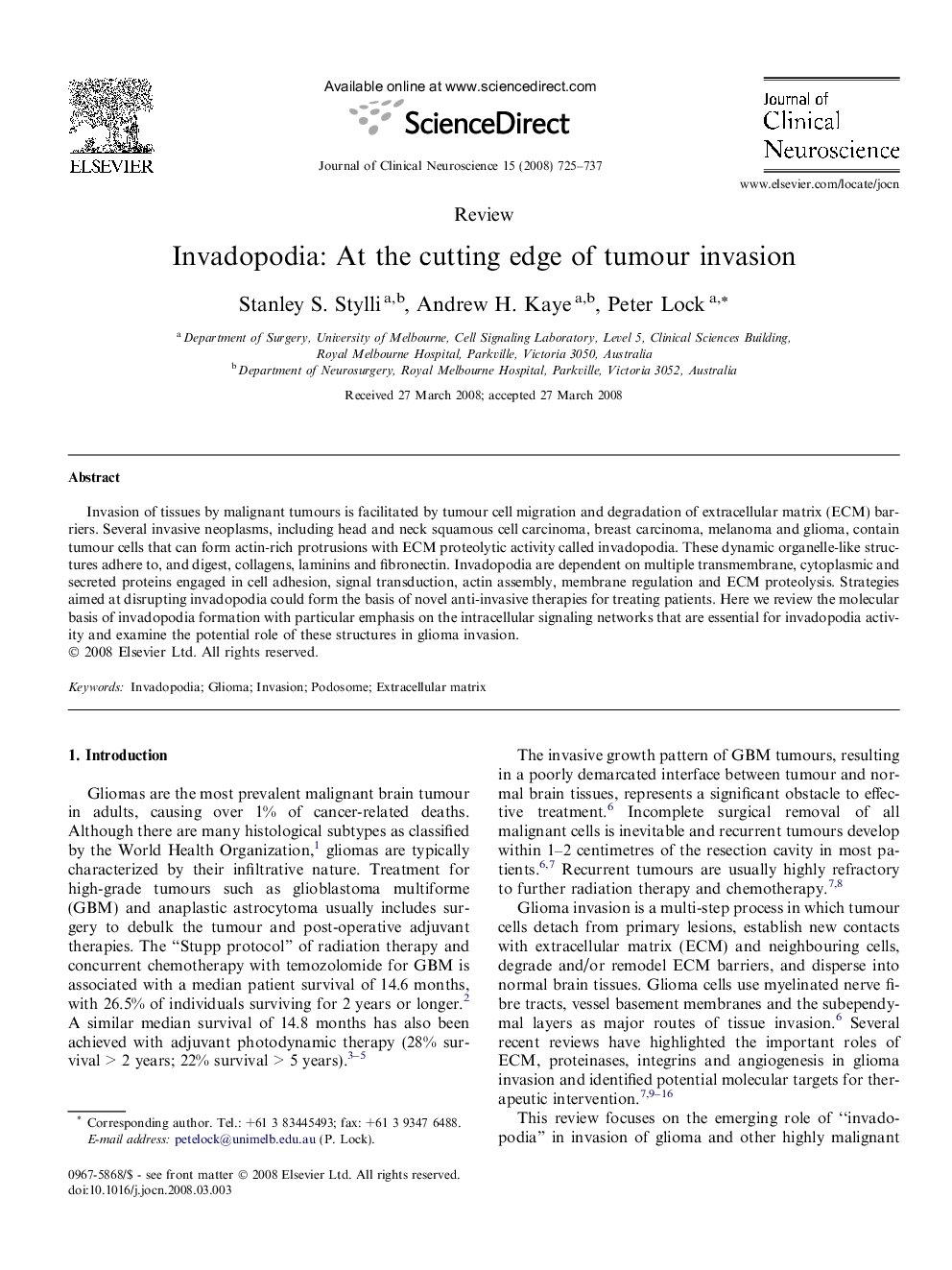| Article ID | Journal | Published Year | Pages | File Type |
|---|---|---|---|---|
| 3062688 | Journal of Clinical Neuroscience | 2008 | 13 Pages |
Invasion of tissues by malignant tumours is facilitated by tumour cell migration and degradation of extracellular matrix (ECM) barriers. Several invasive neoplasms, including head and neck squamous cell carcinoma, breast carcinoma, melanoma and glioma, contain tumour cells that can form actin-rich protrusions with ECM proteolytic activity called invadopodia. These dynamic organelle-like structures adhere to, and digest, collagens, laminins and fibronectin. Invadopodia are dependent on multiple transmembrane, cytoplasmic and secreted proteins engaged in cell adhesion, signal transduction, actin assembly, membrane regulation and ECM proteolysis. Strategies aimed at disrupting invadopodia could form the basis of novel anti-invasive therapies for treating patients. Here we review the molecular basis of invadopodia formation with particular emphasis on the intracellular signaling networks that are essential for invadopodia activity and examine the potential role of these structures in glioma invasion.
